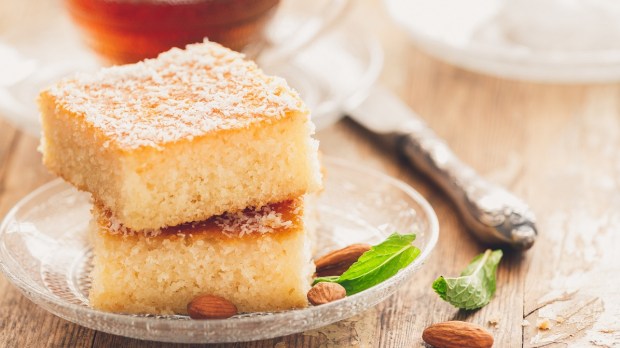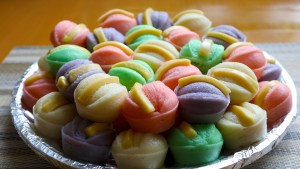Lenten Campaign 2025
This content is free of charge, as are all our articles.
Support us with a donation that is tax-deductible and enable us to continue to reach millions of readers.
Every February, Napolitans feast on traditional Carnival treats like chiacchiere, castagnole, and migliaccio made with recipes that are passed on from one generation to the next. For most children, a warm slice of migliaccio is one of the most awaited carnival experiences. Made with semolina and ricotta, this soft cake topped with sugar was first invented by local farmers during the Middle Ages.

Born out of frugal ingredients available at the time, it was originally made with millet and pig blood, hence the name “migliaccio” from “miglio,” the Italian word for millet. Pig blood was a protein-rich ingredient available to the lower classes during the Middle Ages. It was used to make other typical foods like sanguinaccio, a pudding made of pig blood and chocolate.
As explained by Rosa Iandiorio in Avellino Today, at around 1700 migliaccio’s recipe was changed after pressure from the local Catholic Church leaders to remove the blood, lest it be considered linked to pagan rituals. Locals started to replace this controversial ingredient with sugar, flour, cinnamon, and eggs. Over time, semolina replaced millet and ricotta cheese was added to allow for a soft and spongy consistency. Today, migliaccio is made using semolina, ricotta, eggs, flour and sugar, the ingredients that became popular after encouragement by the Catholic Church.

During Carnival, “migliaccio” is a beloved treat mostly baked by families at home rather than sold at bakeries.
To make migliaccio at home, pour milk, water, butter and lemon zest in a pot and bring to a boil. Remove the lemon zest, add the semolina and let the mix simmer while constantly stirring. In a separate bowl, whisk eggs with white sugar and ricotta. Add to the semolina mix and combine in a smooth paste. Pour into a baking dish and bake for one hour at 365 F.



